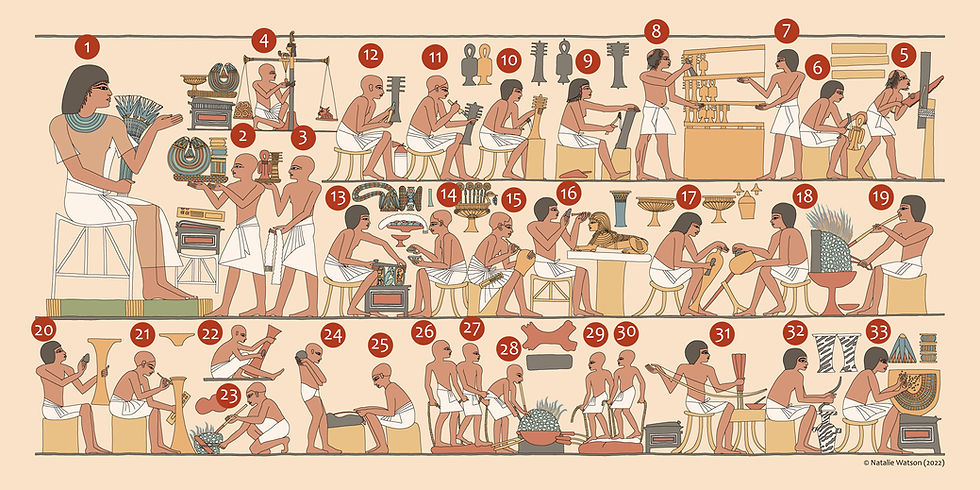Lady Tjepu: A Reproduction from Tomb TT181
- Natalie Watson

- Jun 22
- 2 min read
Object Type: Wall painting
Materials: Limestone, gesso, pigment
Date: c. 1390–1353 BC
Period: Dynasty 18, New Kingdom
Findspot: Tomb of Nebamun and Ipuky (TT181), Sheikh-Abd-el-Gournah, Thebes
Dimensions: 37.6 x 24 cm
Current Location: Brooklyn Museum
Accession Number: 65.197
Print Reference: DP119
Carved into the limestone cliffs of Sheikh Abd el-Qurna, the joint tomb of Nebamun and Ipuky (TT181) dates to Egypt’s 18th Dynasty, during the reigns of Amenhotep III and Akhenaten. Both men were master craftsmen, holding titles such as "Chief Sculptor in the Sacred Place" and "Supervisor of the Balance" at Djeseret Iset, the Small Temple at Medinet Habu.
Although the tomb was never completed, it originally featured extensive painted decoration. Much of this has been lost through centuries of environmental damage, looting, and deliberate removal. Early records by Egyptologists, such as Jean-Vincent Scheil and Norman de Garis Davies, remain crucial sources for reconstructing its imagery.
My reproduction focuses on one of the best-preserved figures from the tomb: the noblewoman Tjepu, mother of Nebamun. The original painting, now housed in the Brooklyn Museum, was executed in pigment on plaster and would have adorned the tomb’s wall in vibrant colour. Although it now survives only in fragments, the clarity and quality of the surviving work demonstrate the skill of the original artists.

Tjepu is presented following the artistic conventions of the time. She wears a fine, semi-transparent linen dress, fitted and fringed, in keeping with 18th Dynasty elite fashion. Her elaborate wig is topped with a perfumed cone and a floral headband, both common features in depictions of women attending ritual or banquet scenes. She is shown in a standard pose, standing with one arm raised in adoration and the other holding a menat necklace and counterpoise, an object associated with the goddess Hathor. These details, while idealised, are rooted in the religious and social practices of the period.
The inscription behind Tjepu (which I haven’t reproduced due to its fragmentary nature) identifies her as "Lady of the House", a title denoting her status within the household. Her image was originally part of a larger scene where she stood behind her son as he poured oil over offerings. This positioning is notable. Tombs typically show the owner's wife in this place, so Tjepu's inclusion here may reflect a particularly close relationship with her son, or simply the availability of space, as Nebamun had likely married Ipuky’s widow, who was already depicted elsewhere in the tomb.












Comments